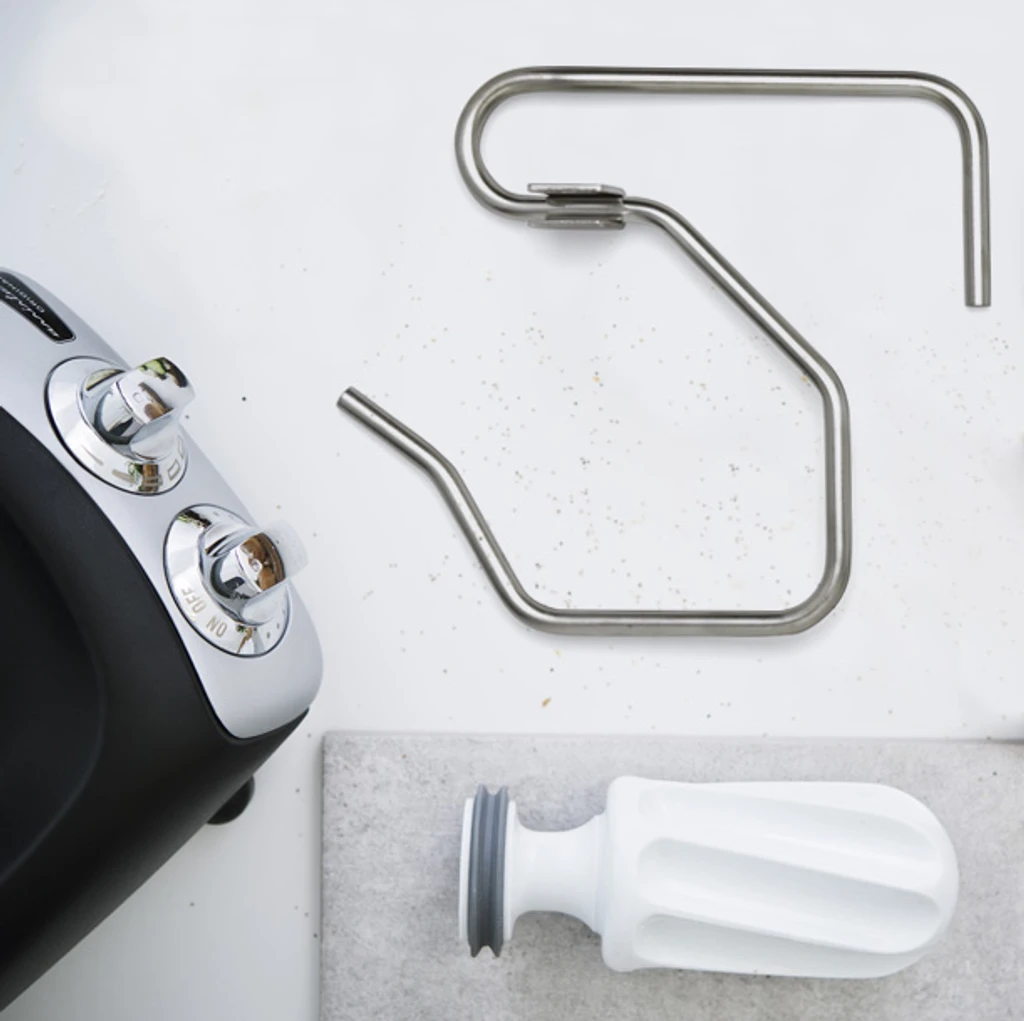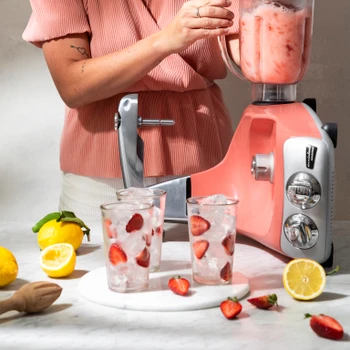When you make dough with an Ankarsrum Assistent Original, you can choose whether to use a dough roller or a dough hook. The end result is the same in many respects, and it’s something of a personal preference really. However, there are advantages to both options.
Dough roller
The dough roller was an attachment produced for Assistent Original when it was first manufactured back in the early 1940s. Back then the dough roller was made of wood. The dough roller is always used in combination with the dough knife, which is designed to replicate the process of kneading and working the dough by hand. In this case, the dough roller is a fist that kneads the dough and the dough knife is the hand that folds it during kneading. The dough knife has the additional job of scraping the inside of the bowl. This method results in a traditional kneading process similar to kneading by hand, which is unique to the Ankarsrum Assistent. With the dough roller you can make both larger and smaller batches of dough. If you only make one batch for one loaf, we recommend using the dough roller rather than the dough hook. The dough roller is also the preferred option when making doughs with a high liquid content or a lot of butter. (Read more about this here.) The dough roller is also very useful when baking gluten-free. (Read more about this here.) When using the dough roller, remember not to lock the arm straight away but to leave the dough roller to rotate along the inner edge of the bowl. Only when the dough becomes so firm that it climbs up the inside of the bowl should you lock the roller 2-4 cm away from the edge of the bowl.
Dough hook
The dough hook was first included as an accessory with the Assistent in the 1960s in connection with its launch on the American market. It has proved a very popular product and is still supplied today. The dough knife is always used in combination with the dough hook. If the dough roller kneads the dough like a fist, then you could say that the dough hook kneads the dough by pulling on it. The dough hook tends to be recommended when you are making more than one loaf of bread and is ideal for working larger batches. If you are using fresh yeast, which needs to be dissolved, you may need to help it along by moving the arm to the middle a few times.
General user tips
Add the liquid first. Then add the remaining ingredients, leaving the flour until last and adding it a little at a time. Generally when you make dough in an Ankarsrum, you can, as a rule, use slightly less flour than indicated in the recipe. A good tip is therefore to add flour a little at a time as the dough forms. Then when you set the timer and leave the Assistent to knead the dough, try not to add any more flour. As stronger gluten strands develop during kneading, adding flour at this point will cause new weaker strands to form as well. (Read more about this here.) After 8-10 minutes of being worked by the Assistent the dough should start to feel firmer. If you feel that the arm is “punching” the dough or that the dough is not moving, this usually indicates that the dough has become too firm. If this happens, reduce the speed and adjust the arm using the base knob.





